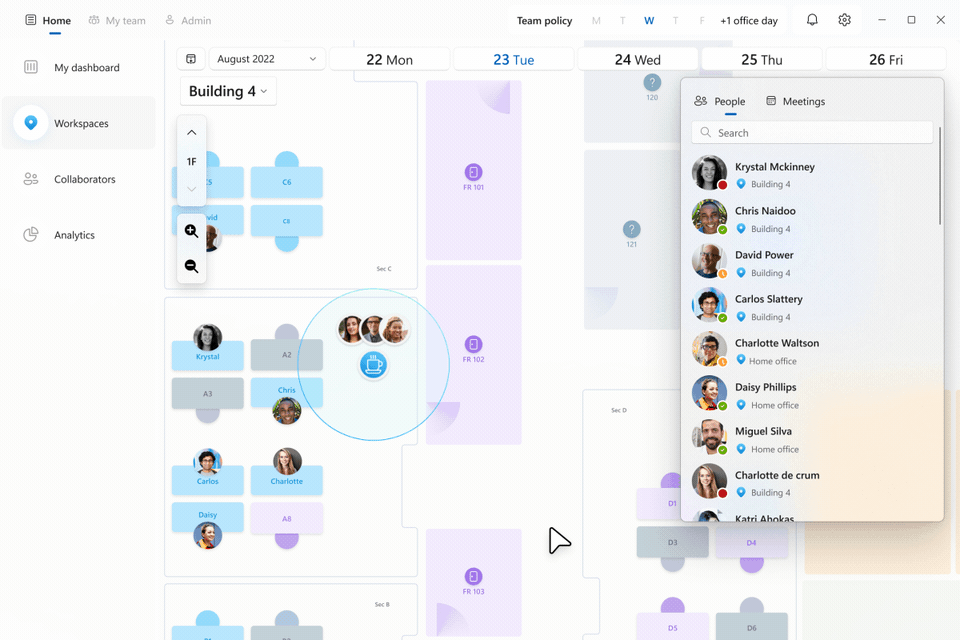Last year we published our predictions for the work trends of 2022. As we reflect back on the year, many of these trends are still developing. Retaining talent is an ongoing challenge. Lateral mobility within companies is becoming more prevalent as employees seek to reskill and upskill.
The pandemic was a catalyst for rapid technological advancement which created its own challenges. This increase in adoption in new technologies will continue into 2023. We have collated the latest research on continuing and emerging workplace trends, and these are focused on new technologies and new business processes.
Modernise your Tech
Accelerating the implementation of emerging technologies will be key to business growth. Investing in technology will save costs long term, increase revenue and expand capabilities. From maximising your data to educate business decisions, updating legacy technology and embracing AI, your business can grow exponentially with the assistance of new solutions.
Maximise what you can get from your data with deeper analysis. Power BI lets employees in all functions gain insights from their own data.
Power BI takes the guesswork out of your information, empowering data-driven decision-making that drives strategic success. And it does this in a way all your employees can understand to help make more intelligent business decisions.
AI technology will create a more customised experience for employees, from onboarding to personalising learning journeys. Interventions can be targeted to be relevant and purposeful on an individual level, thus increasing engagement and satisfaction. You can track patterns to identify disengagement at an early level and take steps to address it before it becomes disruptive. Measure the success of interventions on job satisfaction and happiness with intelligent data-driven insights.
Moving away from legacy systems can be daunting. These critical systems are embedded within the organisation, and the benefits of any digital transformation efforts may not be immediately apparent. Modernising your IT systems may not seem like an urgent task. However, the cost of upgrading is often much lower than maintaining unsupported systems. Implementation costs are offset by improved performance, enhanced efficiency, and access to new digital tools. Help your employees to work smarter, more productively and on a solution which is secure and future-proof.
People are more accepting of automation technology when it helps decision making. They trust algorithms for predictions and estimations, but still prefer human input when considering this information and coming to a decision. Acceptance is higher if the information is accompanied by an explanation of how the answer was reached.
Technology can significantly boost productivity and efficiency, but it’s important to understand how your employees feel about adoption and find ways to get them on board.
Embrace Automation
Following this year’s rapid advancements in technology, we will likely continue to see greater adoption of new automation and AI tools. Despite initial pushback when these were first introduced, people are starting to accept it into the workday and realise the benefits for productivity and efficiency. To avoid being left behind, embrace the capabilities of automation tools and train your workforce to use them.
Automating mundane tasks such as admin will free up time for more high value, inspiring tasks better aligned with your employees’ skillsets. Reducing busywork allows more time for interaction and innovation. Power Automate is a low-code tool that can be harnessed by everyone to maximise their own productivity. Enhancing business processes will also have a positive impact on employee engagement as work becomes more meaningful. For your business, there will be cost savings as human error reduces. Gartner forecasts a 30% reduction in operational costs for businesses who deploy hyper-automation and modernise their processes.
Businesses are always looking for ways to increase productivity but working harder is not the solution. There are many ways in which a business can increase productivity. Think about what’s holding your employees back in your business and solve the problem for the long term.
Presenteeism is not Productivity
Microsoft recently explored the issue of productivity paranoia that is creating a disconnect between employees and leaders. 87% of workers feel just as or more productive at home, but 85% of managers perceive them as less productive.
On the other side of the argument, it is ineffective to mandate a full return to the office, and research has shown that employees are willing to leave organisations that don’t allow them their desired flexibility.
Being in the office does not necessarily equal higher productivity levels. Balance is everything. 73% of survey respondents said they’d work in the office more often if they knew their team members would also be present. Make balanced decisions so that regular catch-ups of whole teams are held in the office space but also empower employees to make decisions on working patterns which suit them best.
Microsoft’s latest addition to the Viva family – Viva Places – enables you to schedule office days to maximise their potential. Plan your activities, set purposeful goals, ensure the relevant team members will be there and easily book meeting spaces. Centre in-person time on face-to-face interaction and talking to each other to build strong relationships. Move away from activities that can be completed just as effectively at home – people shouldn’t be isolated with headphones on video calls while in the office. You can maximise the time spent together by organising creative, brainstorming or team building tasks for those days.

Our 2023 Work Trends will encourage you to focus on interpersonal dynamics and be intentional with how your hybrid teams interact. Find out what works best for your team and motivate them to come in by making office days worthwhile.
Early adopters of technology are twice as likely to meet their business objectives and are more profitable. The quality of tech, ongoing innovation and commitment to training will become a deciding factor for employees deciding which company to work for.
You can follow us on LinkedIn and subscribe to our monthly newsletter for more insights like these.


